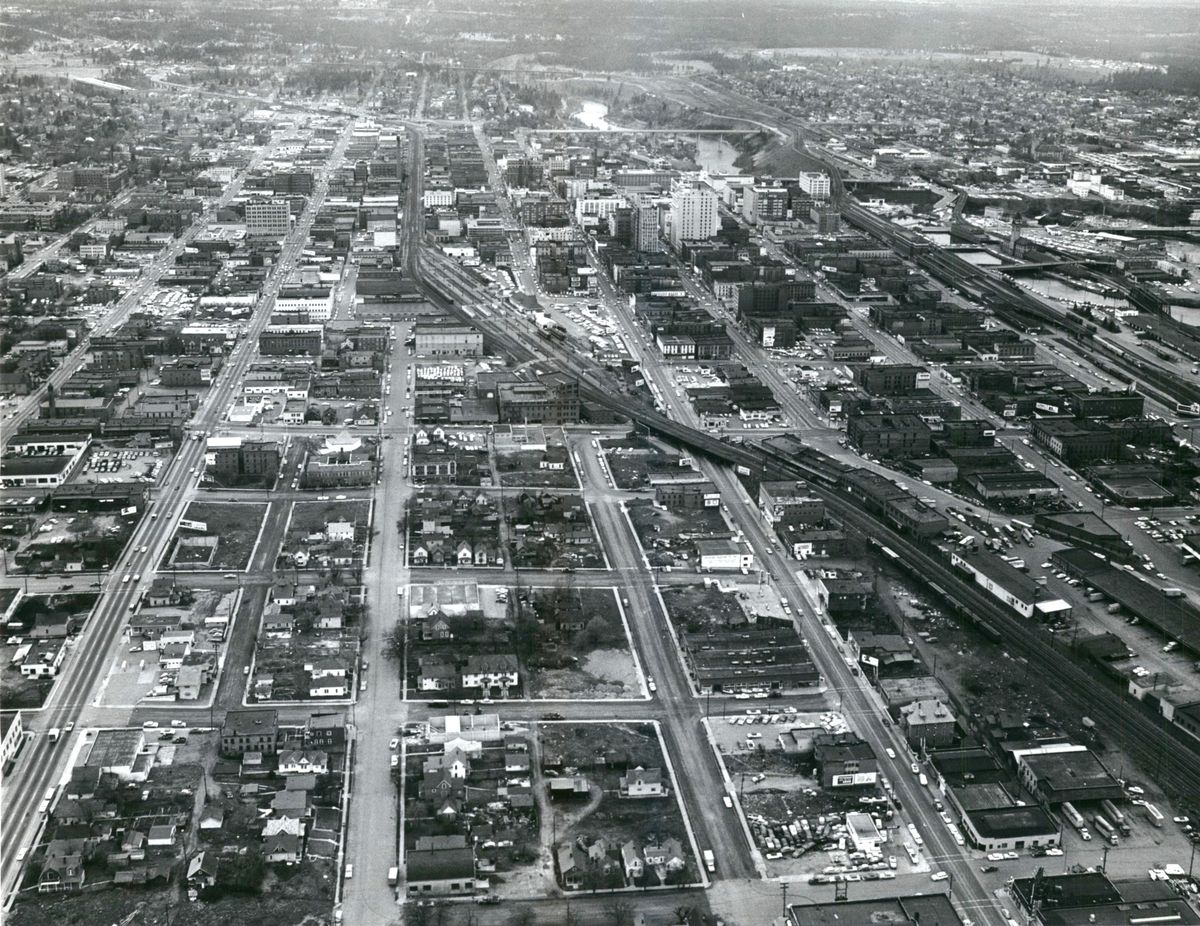Then and Now: The First Transcontinental Railroad

The first white settlers came to Spokane on horseback in the 1870s, but it was the railroad that filled the city with entrepreneurs, miners, loggers, farmers, tradesmen and other new residents. And modern trains still follow the route of that first rail line through town.
In the 1850s, the federal government sponsored expeditions to find the best rail routes to the western states. The first transcontinental line, an effort by the Western Pacific, Central Pacific and Union Pacific railroads, was completed in 1869 with the driving of a golden spike at Promontory, Utah. Within two years, three southern routes were connected. At the same time, Northern Pacific was pushing to complete a northern route through Spokane. To spur development, the U.S. government gave the NP 40 million acres of land along the route, which was used as collateral to finance the venture.
The NP rails laid from Seattle reached Spokane in 1881 and crews continued east. As rails were laid, President Ulysses S. Grant and railroad dignitaries headed west from Minnesota. The NP’s “golden spike” was driven at Gold Creek, Montana, on Sept. 8, 1883. Spokane organizers planned a party to welcome Grant and railroad dignitaries the next day, but the train was delayed and the party never happened.
Still, within days of connecting, the train brought hundreds of prospectors looking for gold in the Coeur d’Alene Mountains and in Stevens and Pend Oreille counties.
In Spokane, the rails ran along Railroad Avenue, between First and Second avenues downtown.
About 1915, the NP rails were elevated on a viaduct to separate cars from train traffic.
NP’s was Spokane’s first transcontinental route, but eventually the Great Northern, Milwaukee Road and Union Pacific all would go through Spokane.
In 1970, the Northern Pacific, the Great Northern, the Spokane, Portland and Seattle Railway and the Chicago, Burlington and Quincy Railroad merged into Burlington Northern Railroad. Spokane’s world’s fair was just a few years away and BN agreed to move all rail traffic onto the NP corridor on Railroad Avenue. Today, all east-west rail traffic through Spokane is on the original NP corridor.